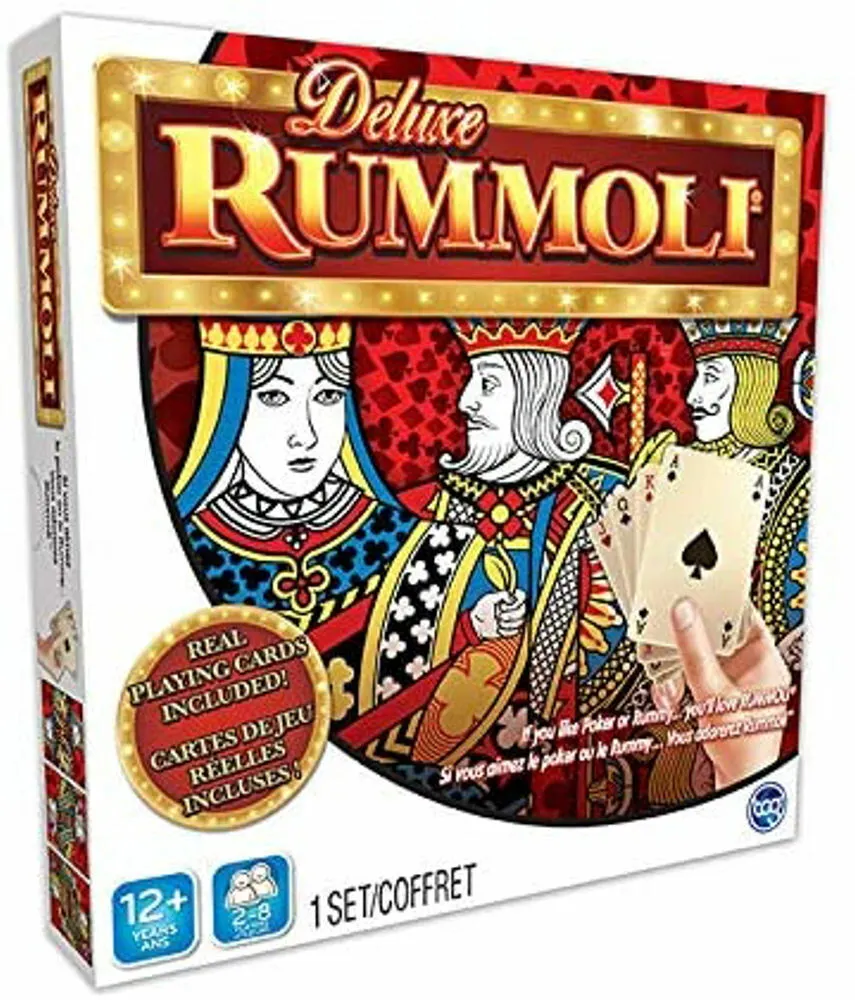Rummoli (1940)
Rummoli is a popular family card game for two to eight people, first marketed in 1940 by the Copp Clark Publishing Company of Toronto. It is a variation of the Stops Group of matching card games, specifically falling into a subgroup of stops games based on the German Poch. The game has gained popularity due to its simple rules and engaging gameplay, making it a favorite among families and casual gamers.
Game Components of Rummoli
How To Setup Rummoli
Before the game begins, each player pays one chip to each pot on the Rummoli board. The dealer then deals the cards, including an extra hand known as the “widow.” All cards are dealt, so players may have uneven numbers of cards. The widow hand can be swapped with the dealer’s hand or auctioned off to the highest bidder.
Gameplay Mechanics and Game Objective
Mechanics
Game Objective
Player Experience
Rummoli offers a dynamic and engaging experience, combining elements of poker and sequential card laying. The game is usually played for fun or for small stakes, making it accessible and enjoyable for a wide range of players. The social aspect is enhanced by the betting and card-swapping mechanisms, which encourage interaction and strategy.
Pros
Cons
Personal Thoughts on Rummoli
Rummoli is an excellent choice for families and groups of friends looking for a game that mixes strategy, luck, and social interaction. It is particularly suited for those who enjoy card games and are willing to learn the unique mechanics and rules. While it may not be ideal for very young children due to its complexity, it is a great option for older children and adults seeking a fun and engaging gaming experience.
We are supported by our audience. When you purchase through links on our site, we may earn an affiliate commission, at no extra cost for you. Learn more.

